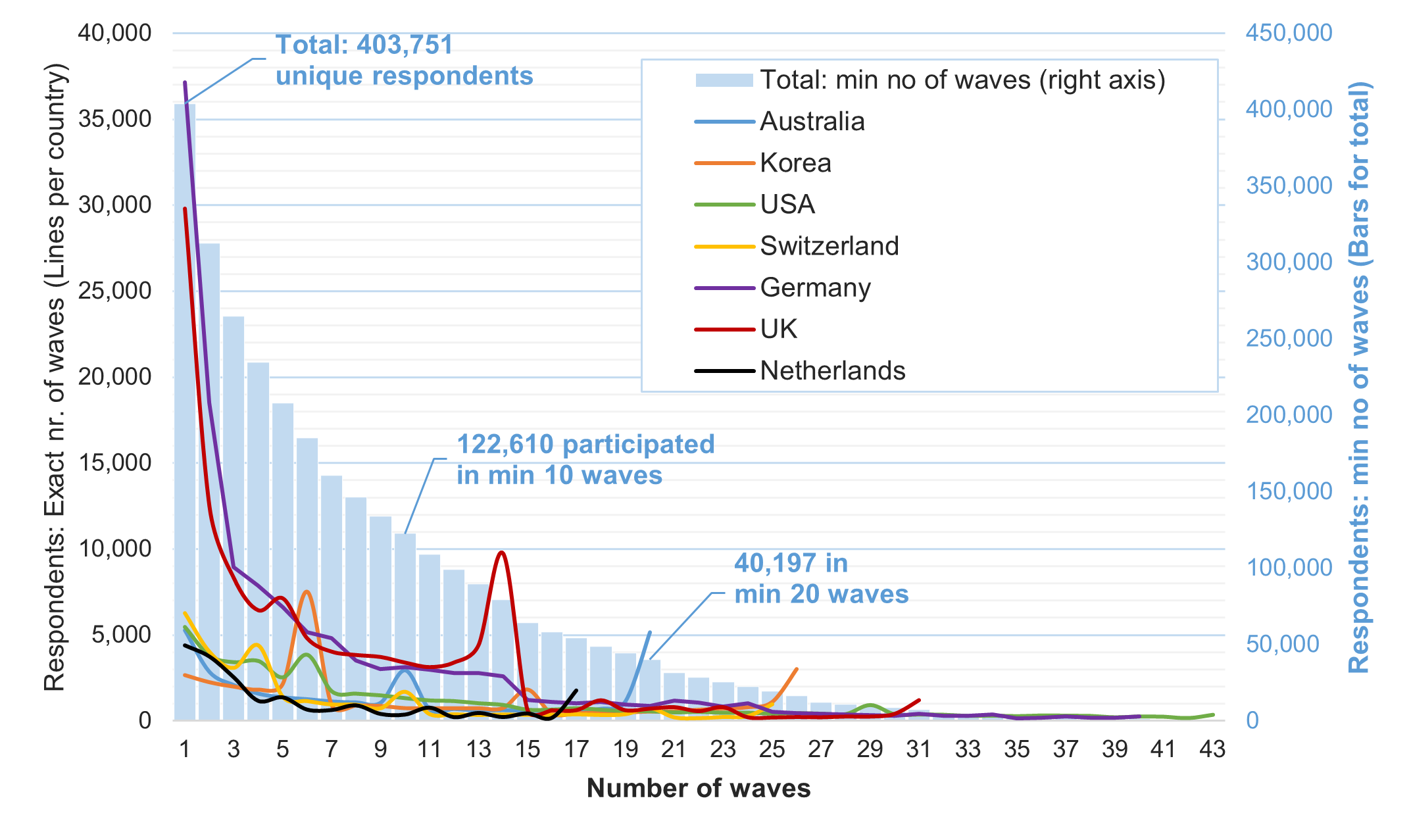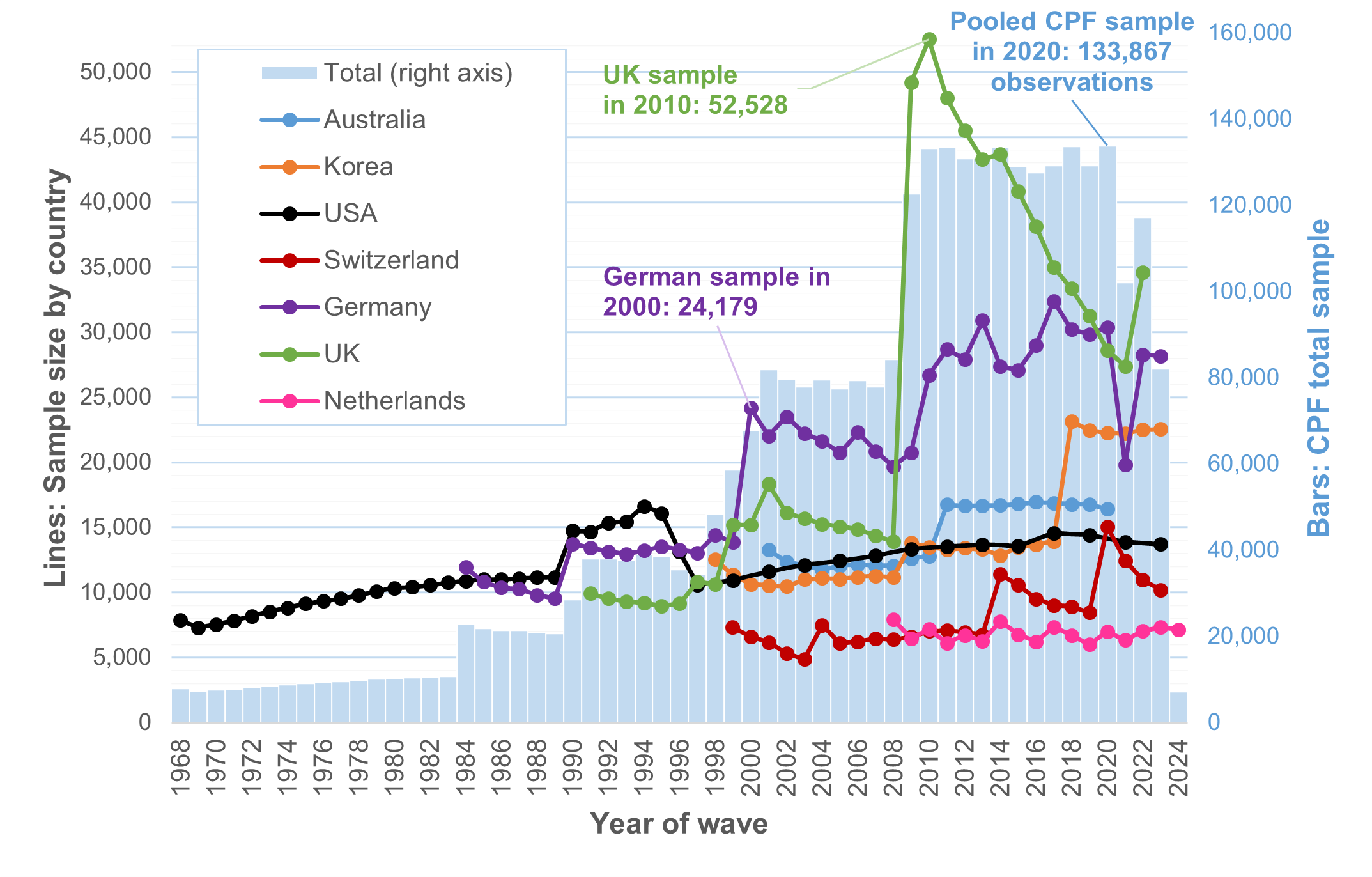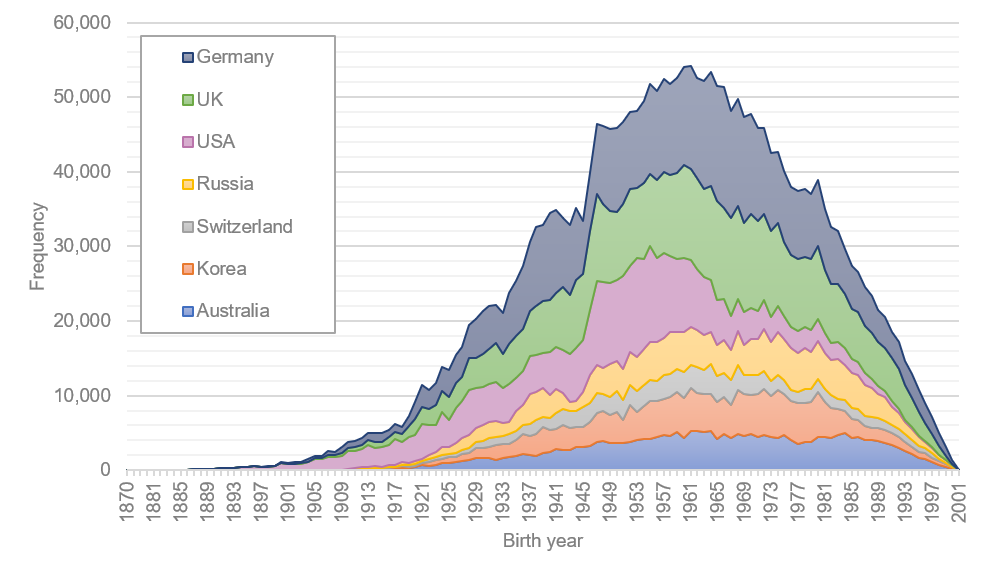Basic information about CPF data
NOTE: CPF 2.0 beta version was published in July 2025
Panel studies included in CPF 2.0
| Country | Survey Name | Start Year | Webpage |
|---|---|---|---|
| Australia | Household, Income and Labour Dynamics in Australia (HILDA) | 2001 | melbourneinstitute.unimelb.edu.au/hilda |
| Korea | Korean Labor and Income Panel Study (KLIPS) | 1998 | kli.re.kr/klips_eng |
| US | Panel Study of Income Dynamics (PSID) | 1968 | psidonline.isr.umich.edu |
| Switzerland | Swiss Household Panel (SHP) | 1999 | forscenter.ch |
| Germany | German Socio-Economic Panel (SOEP) | 1984 | diw.de/en/soep |
| UK | British Household Panel Survey (BHPS) / UK Household Longitudinal Study (UKHLS) | 1991 / 2009 | understandingsociety.ac.uk |
| Netherlands | Longitudinal Internet Studies for the Social Sciences (LISS) | 2007 | lissdata.nl |
| Russia (excluded)* | Russian Longitudinal Monitoring Survey (RLMS) | 1994 | www.hse.ru/en/rlms |
Note: * Starting with CPF v2.0, the Russian Longitudinal Monitoring Survey (RLMS) is no longer included. Read more
Number of waves, observations and respondents (CPF ver. 2.0)
The CPF version 2.0 encompasses up to 43 waves (between 1968 and 2024), combines data from seven countries, and comprises approximately 3 million observations from more than 400,000 respondents

Number of waves that individual participated: exact number by survey (left axis) and minimal number for the total sample (right axis) (CPF ver. 2.0)
An average respondent participated in 7.6 waves (between 5.7 in the Netherlands and 11.1 in the US). As shown in the figure below, out of all 403,751 respondents, 122,610 participated in a minimum of 10 waves and 40,197 in a minimum of 20 waves. Country-specific lines indicate the exact number of waves for which the dataset provides information on sample members. For example, there are almost 30,000 respondents in the UK who participated in only one wave, and around 3,400 who participated in exactly ten waves. In Australia, 16.2% of the sample (ca. 5000 respondents) participated in all 20 waves of HILDA.

Timeline of the data and number of observations by wave (CPF ver. 2.0)
The oldest survey in CPF is PSID, covering the period from 1968 to the present, with 43 waves (Figure below). The youngest panel study in CPF is the Netherlands, with 17 waves since 2007/2008, and HILDA with 20 waves since 2001. Since the wave of 2000, the number of participants in SOEP has grown significantly. CPF includes three countries since 1991, four countries since 1998, six countries since 2001, and all seven from 2008 (after excluding Russian data, which were available from 1994). A substantial increase observed for the UK sample in 2009 is related to the transition from the BHPS to the UKHLS. For most surveys, data have been collected yearly (after 1997, the PSID switched to 2-year intervals in data collection).

Distribution of birth cohorts (year of birth) by survey (CPF ver 1.0)

Comments